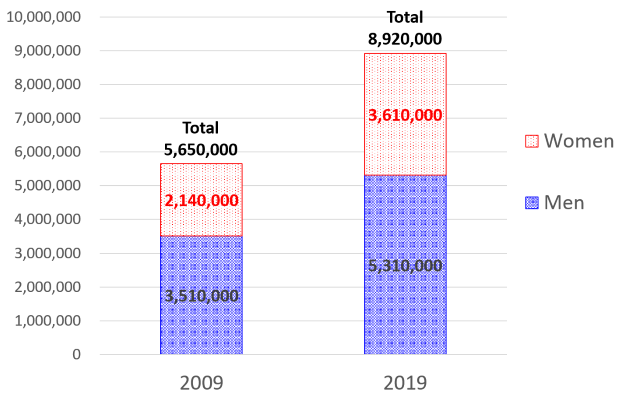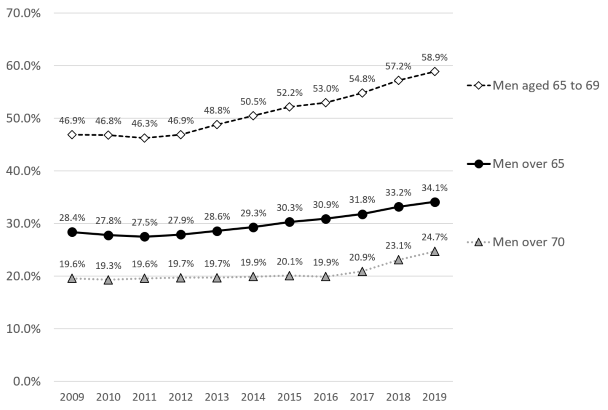Column Finance and the Social Security System 2020.10.06
【Aging, safety net and fiscal crisis in Japan】No.285: The employment rate of the elderly continues to rise
In this column series, Yukihiro Matsuyama, Research Director at CIGS introduces the latest information about aging, safety net and fiscal crisis in Japan with data of international comparison.
According to statistics on the elderly released by the Ministry of Internal Affairs and Communications in September 2020, the number of employed elderly people (those over 65 years old) increased by 58% over a decade, from 5,650,000 in 2009 to 8,920,000 in 2019 (Figure 1). The percentage of workers in the elderly population increased from 19.6% to 24.9% throughout the same period (Figure 2). This figure is also rising in other countries. The reason for this may be that people are anxious about relying entirely on the social security system in their old age; in addition, increasing healthy life expectancy and maintaining motivation to work may also be contributing factors.
Figures 3 and 4 show changes in the percentage of workers in the elderly population by gender. In 2019, the employment rate of the elderly aged between 65 and 69 was quite high, at 58.9% for men and 38.6% for women. It is also noteworthy that the employment rate of those aged 70 and older
increased for both men (20.9% → 24.7%) and women (10.0% → 11.8%) between 2017 and 2019.
Figure 1 Number of elderly people (aged over 65) who are working

Source: Ministry of Internal Affairs and Communications
Figure 2 International comparison of elderly people’s employment rates

Source: Ministry of Internal Affairs and Communications
Figure 3 Changes in the employment rate of men over 65 years old

Source: Ministry of Internal Affairs and Communications
Figure 3 Changes in the employment rate of women over 65 years old

Source: Ministry of Internal Affairs and Communications
